Paint Marker Review: POSCA Marker Review and Tutorial
This post includes several videos that I highly recommend you watch. If you can't watch the video while reading this post, you can save the video to watch for later by clicking the little clock in the corner. Two of the videos are mine- a tutorial on using POSCA markers, and a timelapse video demonstrating a few techniques, and three are supplementary videos by other creators to help cement those techniques. You can check out more of my art supply review/art tutorial videos over on my YouTube channel, which I update at least once weekly with a variety of art related new content.
Awhile back, one of my Twitter friends asked if I had any experience with POSCA markers. At the time, I'd only used a POSCA white brush marker for corrections, but I was neck deep in researching and reviewing waterbased markers, so I quickly ordered a set of 15 from Amazon so I could begin investigating POSCA markers first hand.
Above are the set I actually purchased- a 15 marker fine tipped set of bullet nibbed POSCA markers, but Amazon has a selection of POSCA pens to suit your needs. You could even get this omega set if your heart really desired.
But I recommend you play it safe, order a smaller set, and see if POSCA markers light up your life before investing in the whole shebang.
The Brand
Mitsubishi Uni, better known as Uni-Ball in the US, is a Japanese stationary brand. Their US offerings are lackluster compared to the wide array of pens, pencils, markers, and brushpens sold by Uni Mitsubishi in Japan, and American enthusiasts may have difficulty finding favorites stateside. If you're interested in the gamut of Mitsubishi Uno's products, JetPens carries a few that are difficult to find here, but you may have better luck on Cultpens, EBay and Amazon. I purchased my POSCA markers through Amazon, and received an all Japanese package.
The Stats
Seven different types of POSCA markers available:
Places to Purchase
Amazon
DickBlick
Marker Supply
Durable Supply Company
EBay
Jetpens
Similar Markers (Acrylic):
Montana
Krink
Liquitex
Similar Markers (Waterbased)
Zig Posterman
Krink Water-Based Paint Markers
Similar Markers (Oil-Based)
Sharpie Paint Pens
Zig Painty
DecoColor
The Packaging
I ordered my POSCA markers from Amazon and set them to ship to my mom's place in Louisiana, as I was going to be in town for Mechacon and wanted something to noodle around with in my downtime. My markers arrived in a sturdy Amazon mailing box, and nestled inside the inflated plastic pillows were my POSCA markers in a cardboard box.
The box, while cardboard, isn't sturdy enough to have been shipped as was, but it's plenty sturdy enough to hold my POSCA markers.
The box is designed to be reusable with a removable cap and a slanted front designed to show off the markers.
The Markers
The markers are a little chunkier than your average waterbased marker and they're a little wider around than Liquitex acrylic markers.
Although POSCA markers may LOOK like chalk markers, these markers are permanent once fully dry. Until they dry, they can be blended with a little water and a nylon brush.

My POSCA markers are Japanese, so almost all the text is written in Japanese. Unfortunately, I can't transcribe that for you guys.
The bodies are identical with POSCA written in primary colors across the front, with the caps indicating the paint color inside.
Before the ink moves to the tips, the nibs are white.
It only takes a few pumps (and storing your POSCAS upside down for a little while) to get the paint going.
Since the paper started to pill and tear when I tried to layer or add water, I decided to find something a little sturdier to do my field tests on. I found POSCA markers to be scratchy on Vellum Bristol.
You can check out Uni POSCA's official features, with neat animated graphics on their site. POSCA markers have liquid paint inside barrel with a metal ball to help keep paint mixed. You shake the pen to ensure an even mix. A pump action inside the pen allows you to extract more ink.
Tips can be removed and cleaned out with water, in case of cross contamination, and some can be flipped or replaced, extending the life of the pen. Some are reversable, and even replacable, prolonguing the lives of your markers.
If you're interested in using POSCA markers, I recommend you read their Instructions for Use first before committing.
The Swatch Test (On Strathmore Visual Journal Bristol Paper)
Although the site says these are waterbased markers, I'm still not entirely sure what the paint inside is. These might be acrylic markers, but the website doesn't say clearly what the markers utilize as a paint. These could also be similar to Sharpie's Paint pens, which are oil based. The closest hint I've gotten as to what's used in these markers is that the site says it's 'similar to acrylic', which leads me to believe it's a proprietary formula. The site also says these are pigment markers, but these are nothing like Winsor and Newton's Pigment Markers in performance or formula. Those are ethanol alcohol based and many are translucent, whereas these are waterbased and entirely opaque.
The nibs on the POSCA markers are fairly scratchy and have no give, and tended to tear up the Vellum Bristol paper upon repeated application while still wet (blending, or instance), so I needed to find something sturdier.
The Field Test- On Stonehenge Paper
My first thought was Stonehenge paper- I'd used this and BFK Reeves back when I was a printmaker during undergrad. Stongehenge paper is fairly thick, and able to handle water applications, so I figured it could not only handle the waterbased markers, but the water I planned on using to blend these markers.
Many artists use their finger to blend POSCA markers, and while that's a valid technique, I was worried that it might further abrade the paper surface, so I opted to use a cup of clean water and some inexpensive white nylon brushes. I found that flats worked the best for this technique, so skip the rounds.
I inked this little tree frog with a Sailor Mitsuo Aida fude pen, as it's waterproof and alcohol proof.
Although Stongehenge is tough, and could handle the water, it did start to pill with repeated applications, which slowed my working time. I had to stop and wait for the paper to dry before applying new layers of POSCA, lest the stiff nib scrub the paper into pills.
If you're interested in seeing how I I handle these markers, keep reading because I have a couple great videos towards the bottom of the post. One is a timelapse, for those of you who can learn quickly, and another is a step by step tutorial where I explain everything!
The Field Test- Strathmore Acrylic Paper
Since the Stonehenge paper pilled, I knew I'd need something even tougher- so I picked up some Strathmore Canvas paper while at David Art Supply in New Orleans. This canvas paper does not have an actual canvas surface, but a synthetic, plasticized surface, which seemed ideal.
I inked this salamander with a Sailor Mitsuo Aida brushpen. I thought it might run on the plastic-coated paper, but it seemed to do fine.
In retrospect, I should have left the yellow on the salamander's back open until I was ready to fill it in with yellow, but handling it this way also allowed me to build up color and gave the salamander a glossy appearance.
The Verdict
These are a lot of fun to use, but don't make the mistake of thinking these are a replacement for waterbased or alcohol based markers, as they're very different.
POSCA markers are paint markers, and they work best on sturdy surfaces like gesso'd board, canvas, or canvas board. The stiff nibs of the bullet and chisel nib are prone to tearing up papers, so if you want to use POSCA markers, I recommend you skip the paper and go for sturdier scaffolding
POSCA markers
Alcohol Based Markers
Outside Resources
POSCA FAQ
More Inspiration: http://www.posca.com/uk/customisation
Workshops/Tutorials: http://www.posca.com/uk/creative-workshops
POSCA Blog: http://www.posca.com/uk/news
If you enjoyed this post, or found it useful, inspiring, or informative, please consider backing my Patreon to help fund future posts like the one above. Posts like this take a lot of time, energy, resources, and research to write, photograph, record, and illustrate, and your pledge can go a long way towards ensuring there's a future for them. This blog is currently sponsor-free, meaning everything is paid for out of my pocket- the materials reviewed, the materials tested on, the equipment used to photograph, the equipment used to record, and a show of support from readers who enjoy my content, especially financial support lets me know that you guys are invested in my content. If a monthly pledge is outside your budget or comfort-zone, a one time donation can be made via the Paypal link in my sidebar. You can learn more about the community goals of my Patreon here.
If both of these are not an option for you, please consider pledging your time- clicking affiliate links when interested in the product, watching at least 30 seconds of the ads before videos, occasionally clicking ads on the blog that may be of interest to you. Every click ads up, and the money earned goes towards paying the bills, keeping the lights on, and funding more posts.
Awhile back, one of my Twitter friends asked if I had any experience with POSCA markers. At the time, I'd only used a POSCA white brush marker for corrections, but I was neck deep in researching and reviewing waterbased markers, so I quickly ordered a set of 15 from Amazon so I could begin investigating POSCA markers first hand.
Above are the set I actually purchased- a 15 marker fine tipped set of bullet nibbed POSCA markers, but Amazon has a selection of POSCA pens to suit your needs. You could even get this omega set if your heart really desired.
But I recommend you play it safe, order a smaller set, and see if POSCA markers light up your life before investing in the whole shebang.
The Brand
Mitsubishi Uni, better known as Uni-Ball in the US, is a Japanese stationary brand. Their US offerings are lackluster compared to the wide array of pens, pencils, markers, and brushpens sold by Uni Mitsubishi in Japan, and American enthusiasts may have difficulty finding favorites stateside. If you're interested in the gamut of Mitsubishi Uno's products, JetPens carries a few that are difficult to find here, but you may have better luck on Cultpens, EBay and Amazon. I purchased my POSCA markers through Amazon, and received an all Japanese package.
The Stats
- Nonrefillable
- Variety of nib types and sizes
- Up to 35 colors, check marker type for color availability
- Permanent on porous surfaces
- Can be varnished
- These markers have replacable nibs: POSCA PC-1M, PC-3M, PC-5M, PC-8K and PC-17K.
Seven different types of POSCA markers available:
- PC1-M (1mm)- Extra Fine, 14 total Colors available
- PC1-MR (.7mm)- Extra Fine, like a fineliner or lining pen, 17 colors available
- PCF-350 (brush tip)- 11 colors available
- PC3-M (1.5mm) 27 colors available
- PC5-M (2.5mm) 33 colors available
- PC8-K (8mm) Broad chisel tip, 35 colors available, widest color range
- PC17-K (15mm) Extra broad, 8 colors available
Places to Purchase
Amazon
DickBlick
Marker Supply
Durable Supply Company
EBay
Jetpens
Similar Markers (Acrylic):
Montana
Krink
Liquitex
Similar Markers (Waterbased)
Zig Posterman
Krink Water-Based Paint Markers
Similar Markers (Oil-Based)
Sharpie Paint Pens
Zig Painty
DecoColor
The Packaging
I ordered my POSCA markers from Amazon and set them to ship to my mom's place in Louisiana, as I was going to be in town for Mechacon and wanted something to noodle around with in my downtime. My markers arrived in a sturdy Amazon mailing box, and nestled inside the inflated plastic pillows were my POSCA markers in a cardboard box.
The box, while cardboard, isn't sturdy enough to have been shipped as was, but it's plenty sturdy enough to hold my POSCA markers.
The box is designed to be reusable with a removable cap and a slanted front designed to show off the markers.
The Markers
The markers are a little chunkier than your average waterbased marker and they're a little wider around than Liquitex acrylic markers.
Although POSCA markers may LOOK like chalk markers, these markers are permanent once fully dry. Until they dry, they can be blended with a little water and a nylon brush.

My POSCA markers are Japanese, so almost all the text is written in Japanese. Unfortunately, I can't transcribe that for you guys.
The bodies are identical with POSCA written in primary colors across the front, with the caps indicating the paint color inside.
Before the ink moves to the tips, the nibs are white.
It only takes a few pumps (and storing your POSCAS upside down for a little while) to get the paint going.
Since the paper started to pill and tear when I tried to layer or add water, I decided to find something a little sturdier to do my field tests on. I found POSCA markers to be scratchy on Vellum Bristol.
You can check out Uni POSCA's official features, with neat animated graphics on their site. POSCA markers have liquid paint inside barrel with a metal ball to help keep paint mixed. You shake the pen to ensure an even mix. A pump action inside the pen allows you to extract more ink.
Tips can be removed and cleaned out with water, in case of cross contamination, and some can be flipped or replaced, extending the life of the pen. Some are reversable, and even replacable, prolonguing the lives of your markers.
If you're interested in using POSCA markers, I recommend you read their Instructions for Use first before committing.
The Swatch Test (On Strathmore Visual Journal Bristol Paper)
Although the site says these are waterbased markers, I'm still not entirely sure what the paint inside is. These might be acrylic markers, but the website doesn't say clearly what the markers utilize as a paint. These could also be similar to Sharpie's Paint pens, which are oil based. The closest hint I've gotten as to what's used in these markers is that the site says it's 'similar to acrylic', which leads me to believe it's a proprietary formula. The site also says these are pigment markers, but these are nothing like Winsor and Newton's Pigment Markers in performance or formula. Those are ethanol alcohol based and many are translucent, whereas these are waterbased and entirely opaque.
The nibs on the POSCA markers are fairly scratchy and have no give, and tended to tear up the Vellum Bristol paper upon repeated application while still wet (blending, or instance), so I needed to find something sturdier.
The Field Test- On Stonehenge Paper
My first thought was Stonehenge paper- I'd used this and BFK Reeves back when I was a printmaker during undergrad. Stongehenge paper is fairly thick, and able to handle water applications, so I figured it could not only handle the waterbased markers, but the water I planned on using to blend these markers.
Many artists use their finger to blend POSCA markers, and while that's a valid technique, I was worried that it might further abrade the paper surface, so I opted to use a cup of clean water and some inexpensive white nylon brushes. I found that flats worked the best for this technique, so skip the rounds.
I inked this little tree frog with a Sailor Mitsuo Aida fude pen, as it's waterproof and alcohol proof.
Although Stongehenge is tough, and could handle the water, it did start to pill with repeated applications, which slowed my working time. I had to stop and wait for the paper to dry before applying new layers of POSCA, lest the stiff nib scrub the paper into pills.
If you're interested in seeing how I I handle these markers, keep reading because I have a couple great videos towards the bottom of the post. One is a timelapse, for those of you who can learn quickly, and another is a step by step tutorial where I explain everything!
Since the Stonehenge paper pilled, I knew I'd need something even tougher- so I picked up some Strathmore Canvas paper while at David Art Supply in New Orleans. This canvas paper does not have an actual canvas surface, but a synthetic, plasticized surface, which seemed ideal.
I inked this salamander with a Sailor Mitsuo Aida brushpen. I thought it might run on the plastic-coated paper, but it seemed to do fine.
In retrospect, I should have left the yellow on the salamander's back open until I was ready to fill it in with yellow, but handling it this way also allowed me to build up color and gave the salamander a glossy appearance.
POSCA Tutorial Video- POSCA on Canvas, Amaterasu
Materials Used
Materials Used
- Sailor Mitsuo Aida
- Mono eraser
- Daler Rowney Nylon Brushes
- Blick mini canvas
POSCA Timelapse- POSCA on Black Canvas, Cat
The Verdict
POSCA markers are paint markers, and they work best on sturdy surfaces like gesso'd board, canvas, or canvas board. The stiff nibs of the bullet and chisel nib are prone to tearing up papers, so if you want to use POSCA markers, I recommend you skip the paper and go for sturdier scaffolding
POSCA markers
- Permanent when dry
- Waterbased
- Can be blended with water while wet
- Opaque
Alcohol Based Markers
- Transparent
- Can be blended with alcohol solutions- isoproply alcohol, blender solutions
- Can always be reworked with blender, alcohol, or other markers
Getting Started with Posca Paint Pens - Part 1 - Joseph Tubb
Getting Started With Posca Paint Pens - Part 3 - Blending- Joseph Tubb
Posca x Miss Wah - Kawaii Graffiti Canvas (Vol 1) - Miss Wah
Outside Resources
POSCA FAQ
More Inspiration: http://www.posca.com/uk/customisation
Workshops/Tutorials: http://www.posca.com/uk/creative-workshops
POSCA Blog: http://www.posca.com/uk/news
If you enjoyed this post, or found it useful, inspiring, or informative, please consider backing my Patreon to help fund future posts like the one above. Posts like this take a lot of time, energy, resources, and research to write, photograph, record, and illustrate, and your pledge can go a long way towards ensuring there's a future for them. This blog is currently sponsor-free, meaning everything is paid for out of my pocket- the materials reviewed, the materials tested on, the equipment used to photograph, the equipment used to record, and a show of support from readers who enjoy my content, especially financial support lets me know that you guys are invested in my content. If a monthly pledge is outside your budget or comfort-zone, a one time donation can be made via the Paypal link in my sidebar. You can learn more about the community goals of my Patreon here.
If both of these are not an option for you, please consider pledging your time- clicking affiliate links when interested in the product, watching at least 30 seconds of the ads before videos, occasionally clicking ads on the blog that may be of interest to you. Every click ads up, and the money earned goes towards paying the bills, keeping the lights on, and funding more posts.






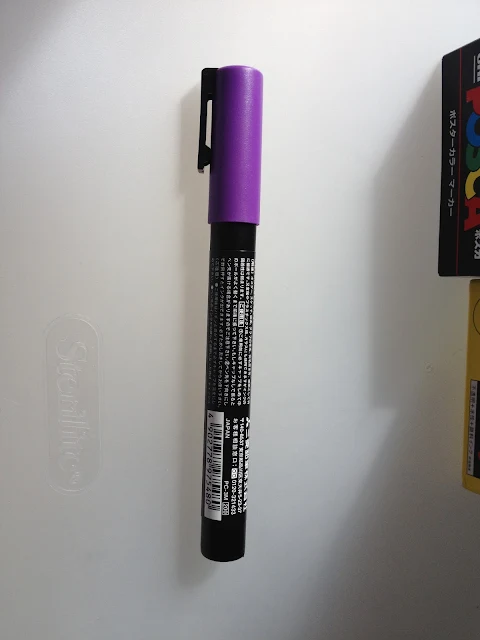



















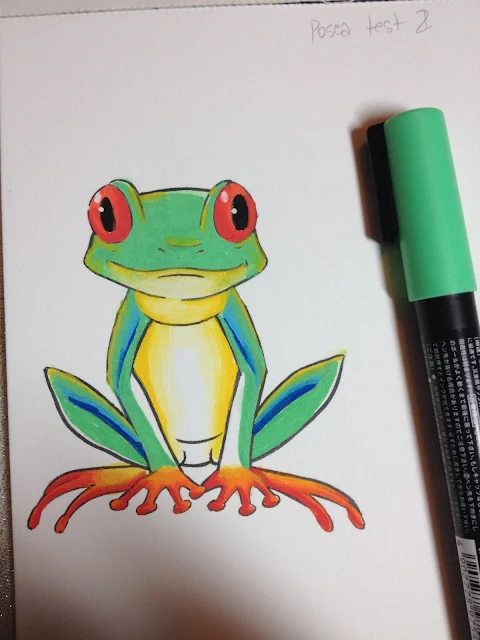














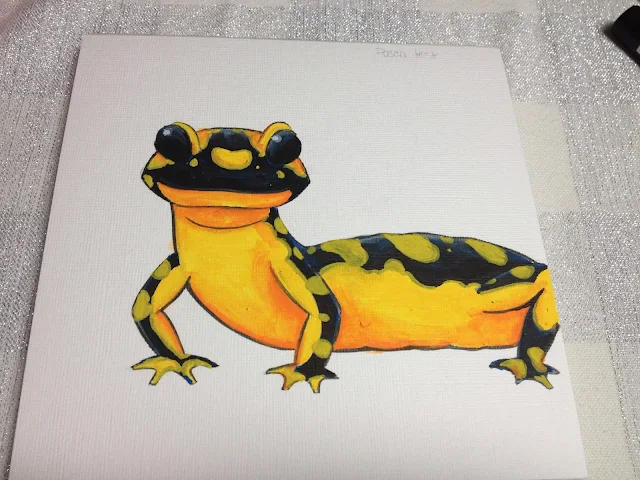
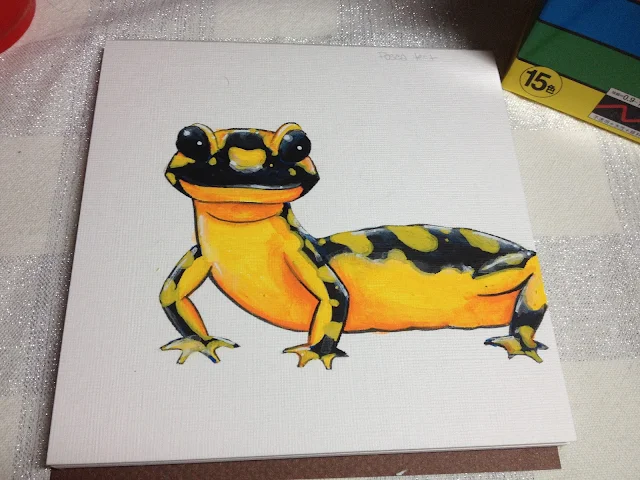
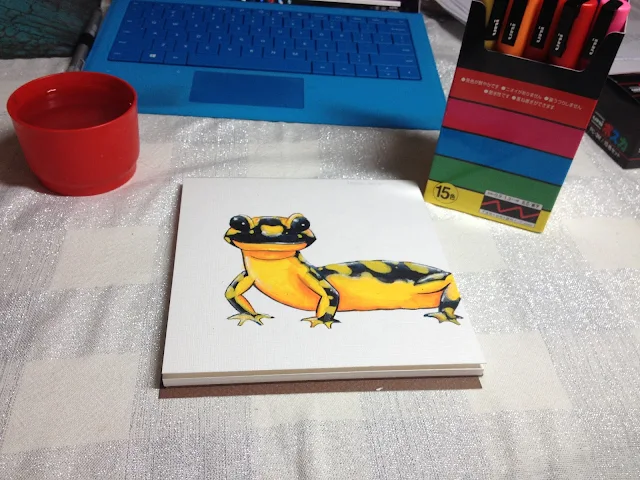




Comments
Post a Comment